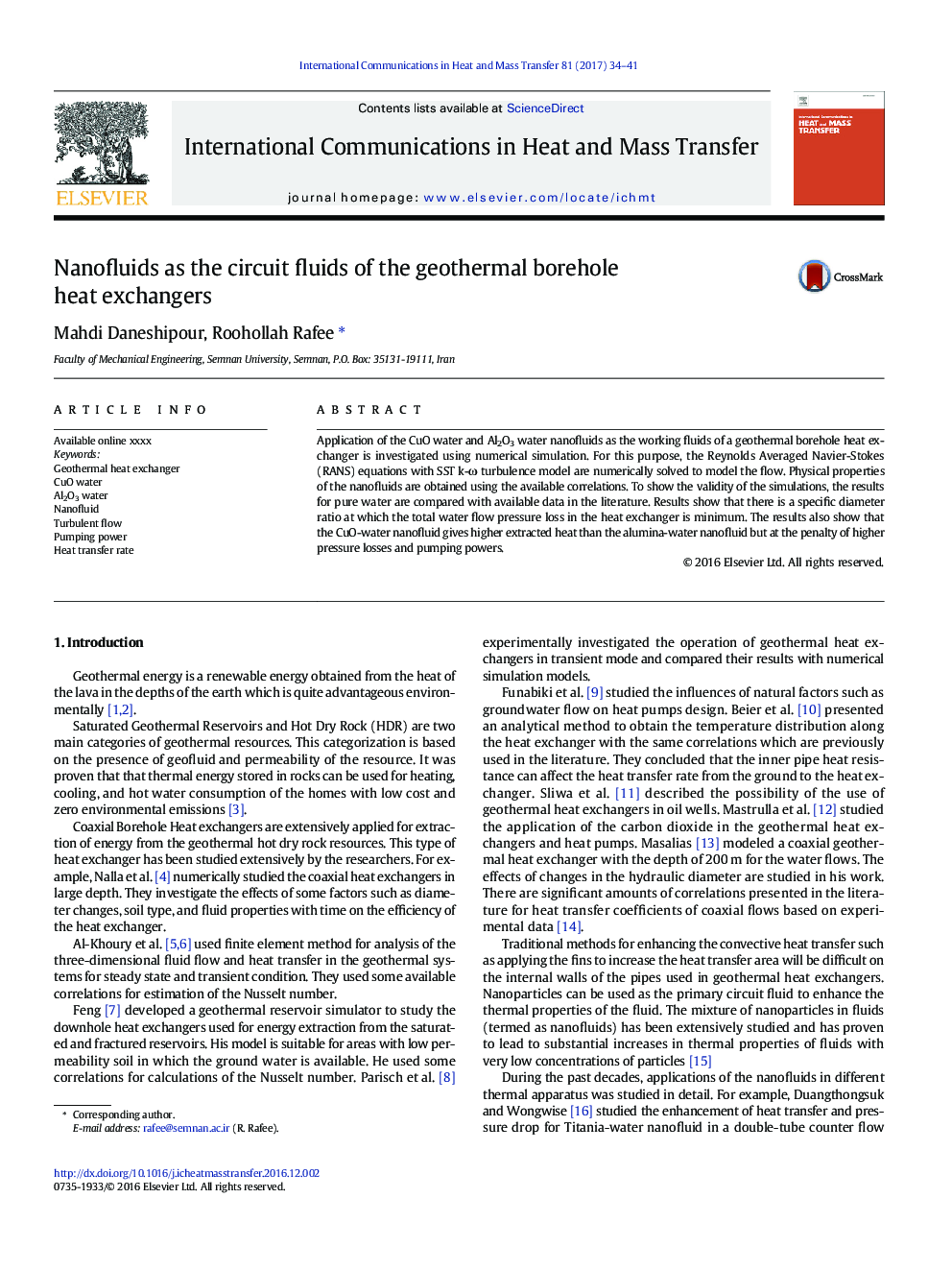| Article ID | Journal | Published Year | Pages | File Type |
|---|---|---|---|---|
| 4992975 | International Communications in Heat and Mass Transfer | 2017 | 8 Pages |
Abstract
Application of the CuO water and Al2O3 water nanofluids as the working fluids of a geothermal borehole heat exchanger is investigated using numerical simulation. For this purpose, the Reynolds Averaged Navier-Stokes (RANS) equations with SST k-Ï turbulence model are numerically solved to model the flow. Physical properties of the nanofluids are obtained using the available correlations. To show the validity of the simulations, the results for pure water are compared with available data in the literature. Results show that there is a specific diameter ratio at which the total water flow pressure loss in the heat exchanger is minimum. The results also show that the CuO-water nanofluid gives higher extracted heat than the alumina-water nanofluid but at the penalty of higher pressure losses and pumping powers.
Related Topics
Physical Sciences and Engineering
Chemical Engineering
Fluid Flow and Transfer Processes
Authors
Mahdi Daneshipour, Roohollah Rafee,
